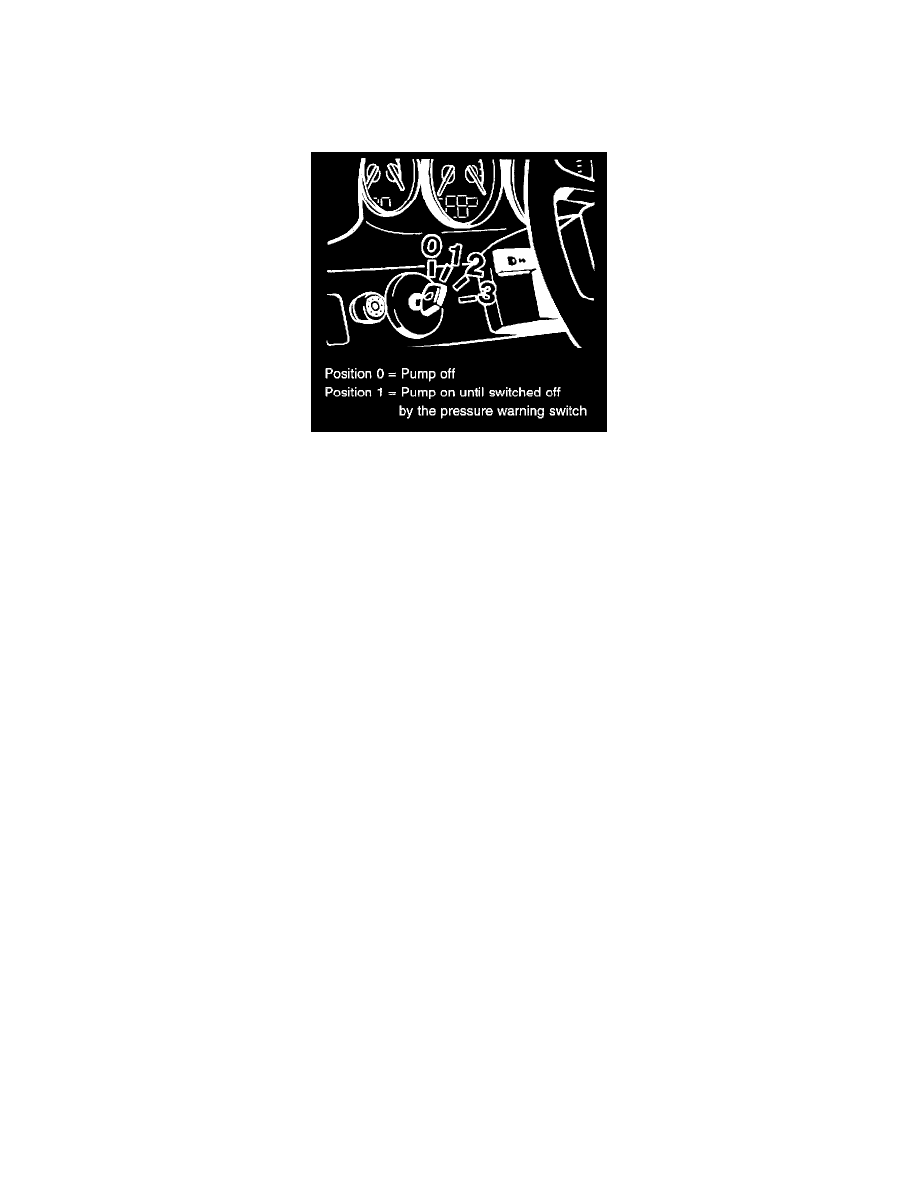911 Turbo AWD F6-3600cc 3.6L SOHC Twin Turbo (1997)

at the transparent bleeder line of the collection bottle.
Note
Before removing the manometer after the test, the booster circuit must be depressurized.
3. Tests
Note
Operation of the pump is regulated by means of the ignition key for testing purposes.
-
In ignition key position 0, plug the electrical plug onto the pump. Locate the pressure gauge in a position where it can be seen.
-
For the tests, it is expedient to observe the following sequence:
a. Pressure accumulator - Gas filling pressure
b. Switching points for the brake pressure warning lamp
c. Cut-in and cut-out points of the pump
d. Leak test
-
Turn the ignition key to position 1 (pump starts up).
a. Gas filling pressure of the pressure accumulator.
Turn the ignition key to position 0 at approx. 100 bar.
Operate the brake pedal several times and observe the pressure gauge. When the indicator falls rapidly towards zero, the filling pressure of the
pressure reservoir has been reached. For required values, see Nominal Values table.
Note
Sensitively operate the brake pedal shortly before the gas filling pressure is reached.
b. Checking the switching points for the brake pressure warning lamp.
Pressure build-up:
Start the engine and observe the warning lamp. Immediately turn the ignition key to 0 position at the instant when the warning lamp goes out. Read off
the pressure on the pressure gauge.
Pressure reduction:
Produce a system pressure of approx. 140 bar. Disconnect the plug at the pressure pump.
Start the engine
Operate the brake pedal sensitively several times until the warning lamp lights up. Read off the pressure on the pressure gauge. Refer Nominal Values.
c. Checking the switching points of the pressure pump
